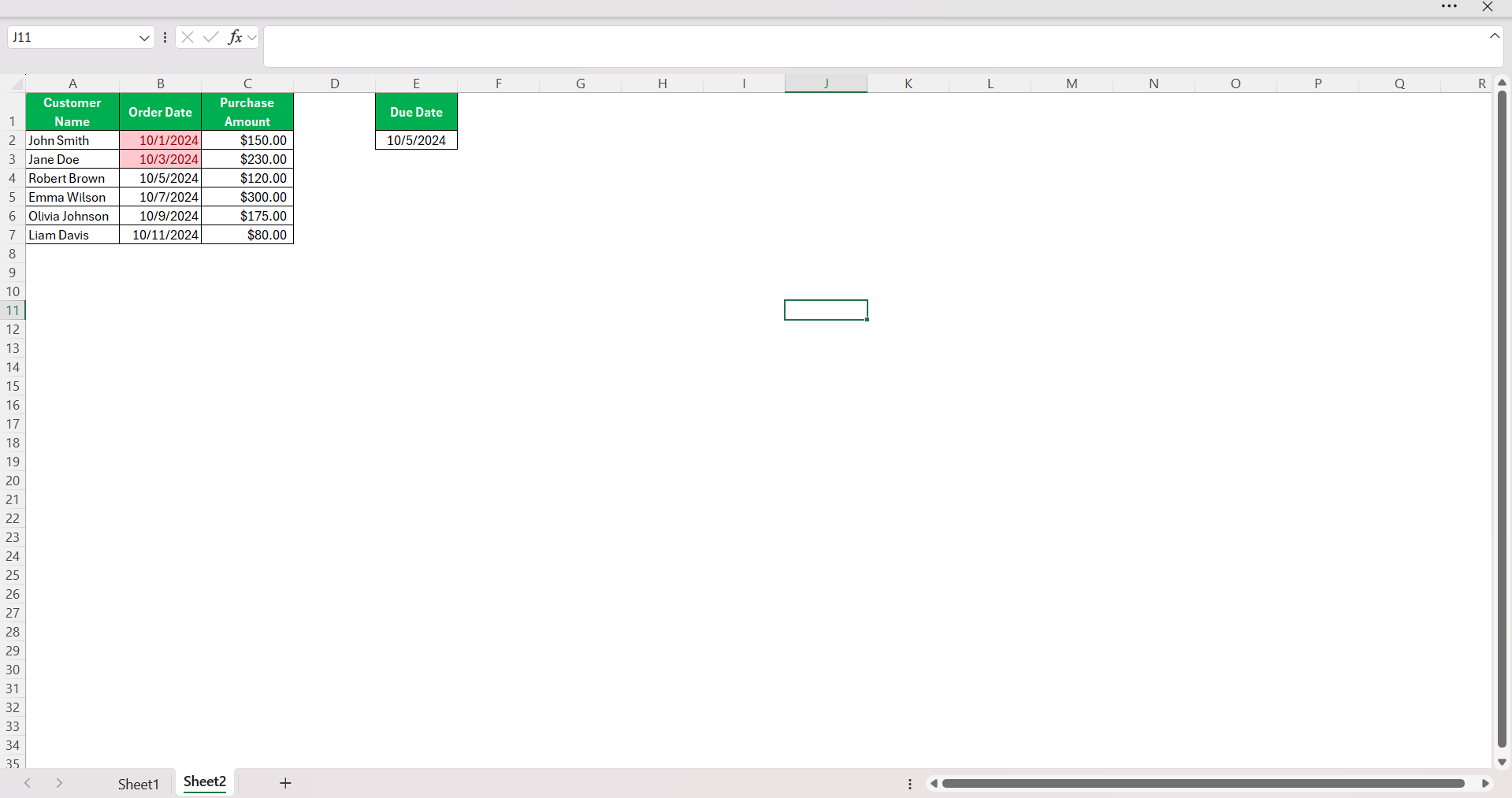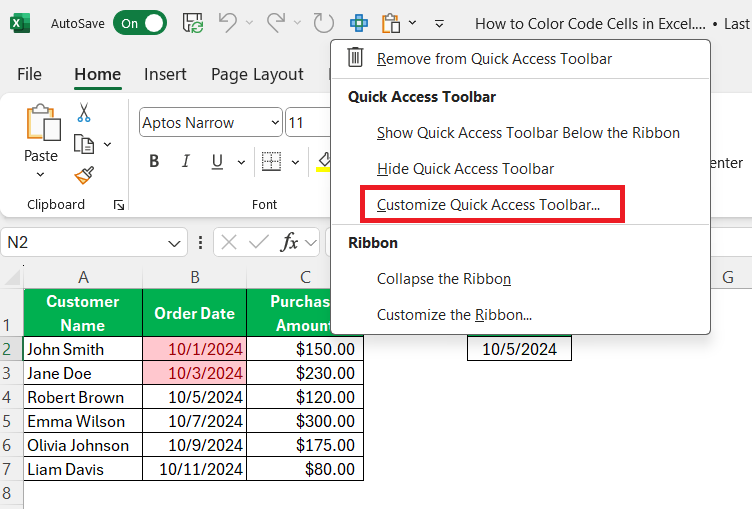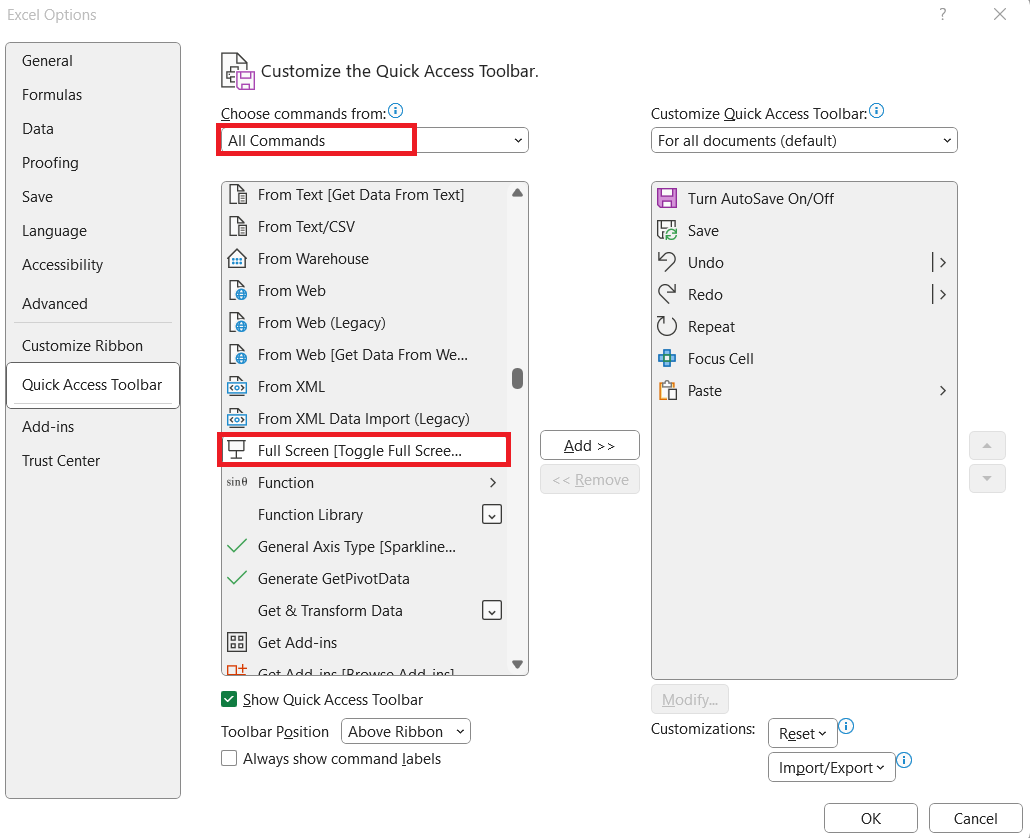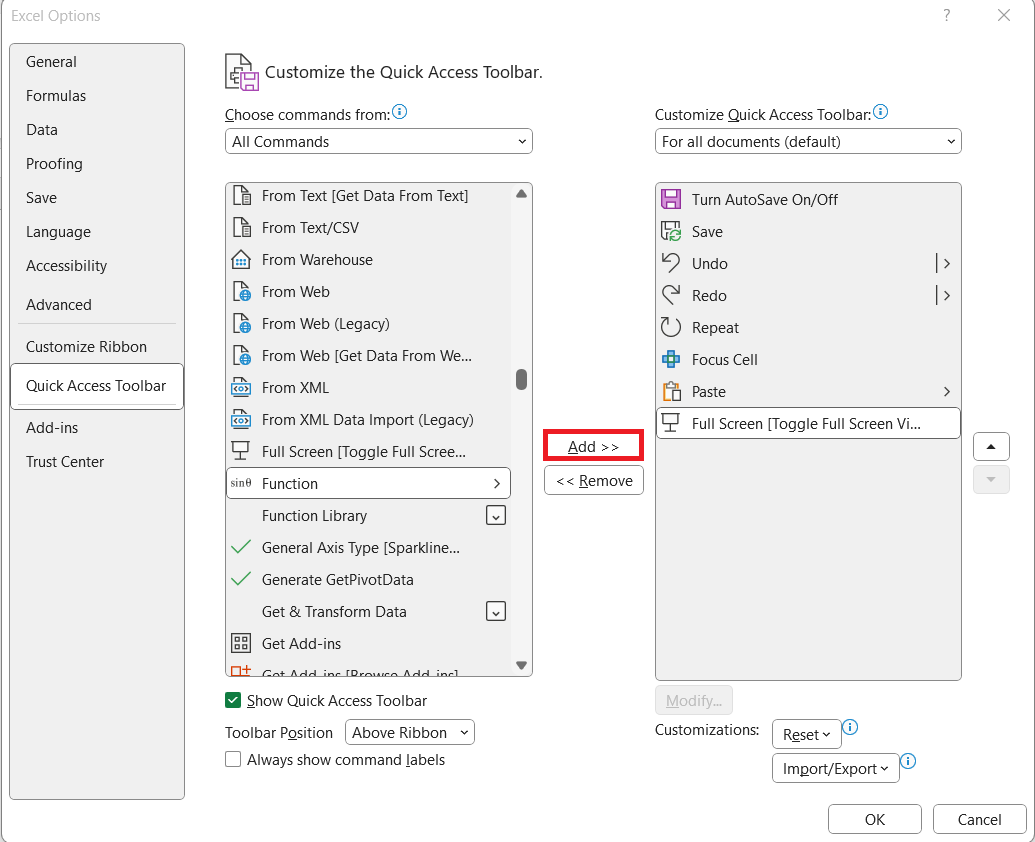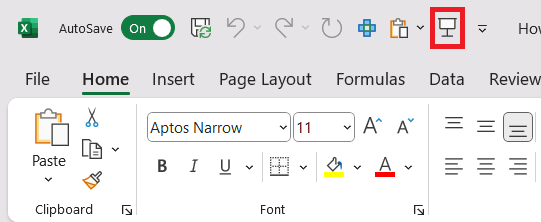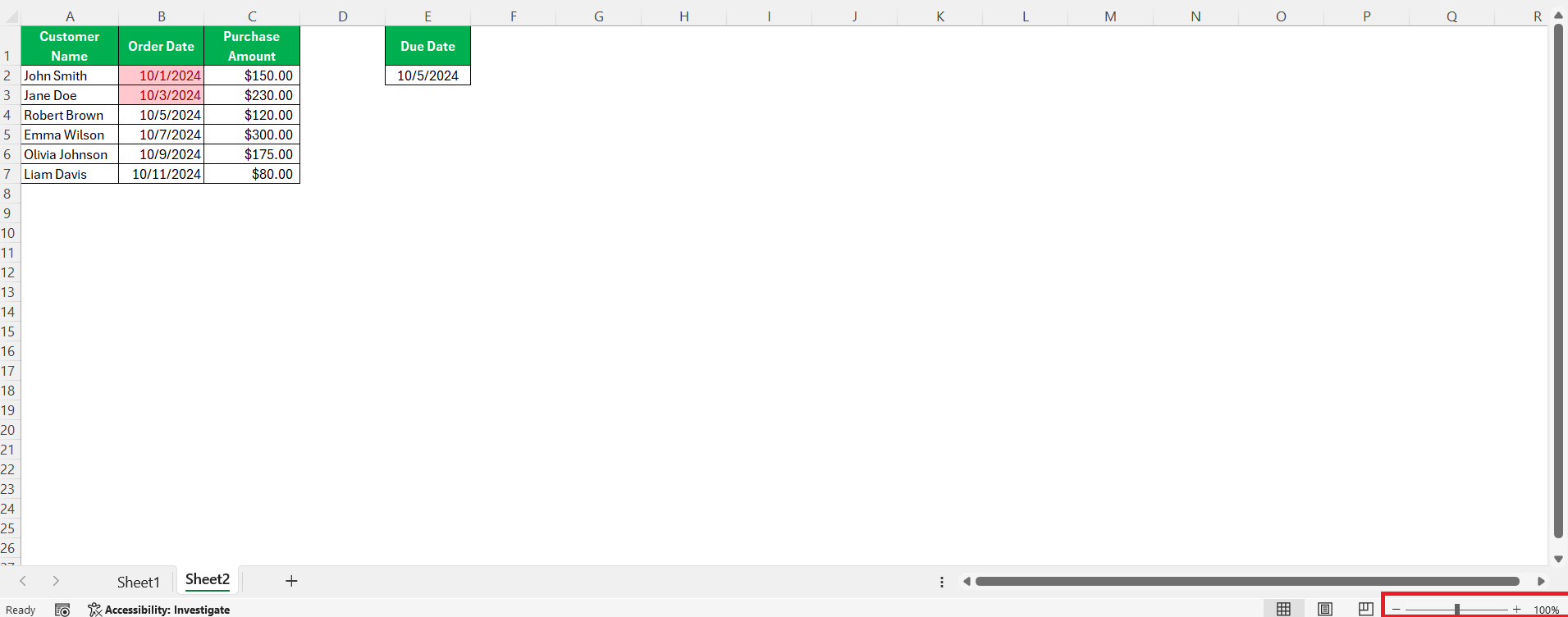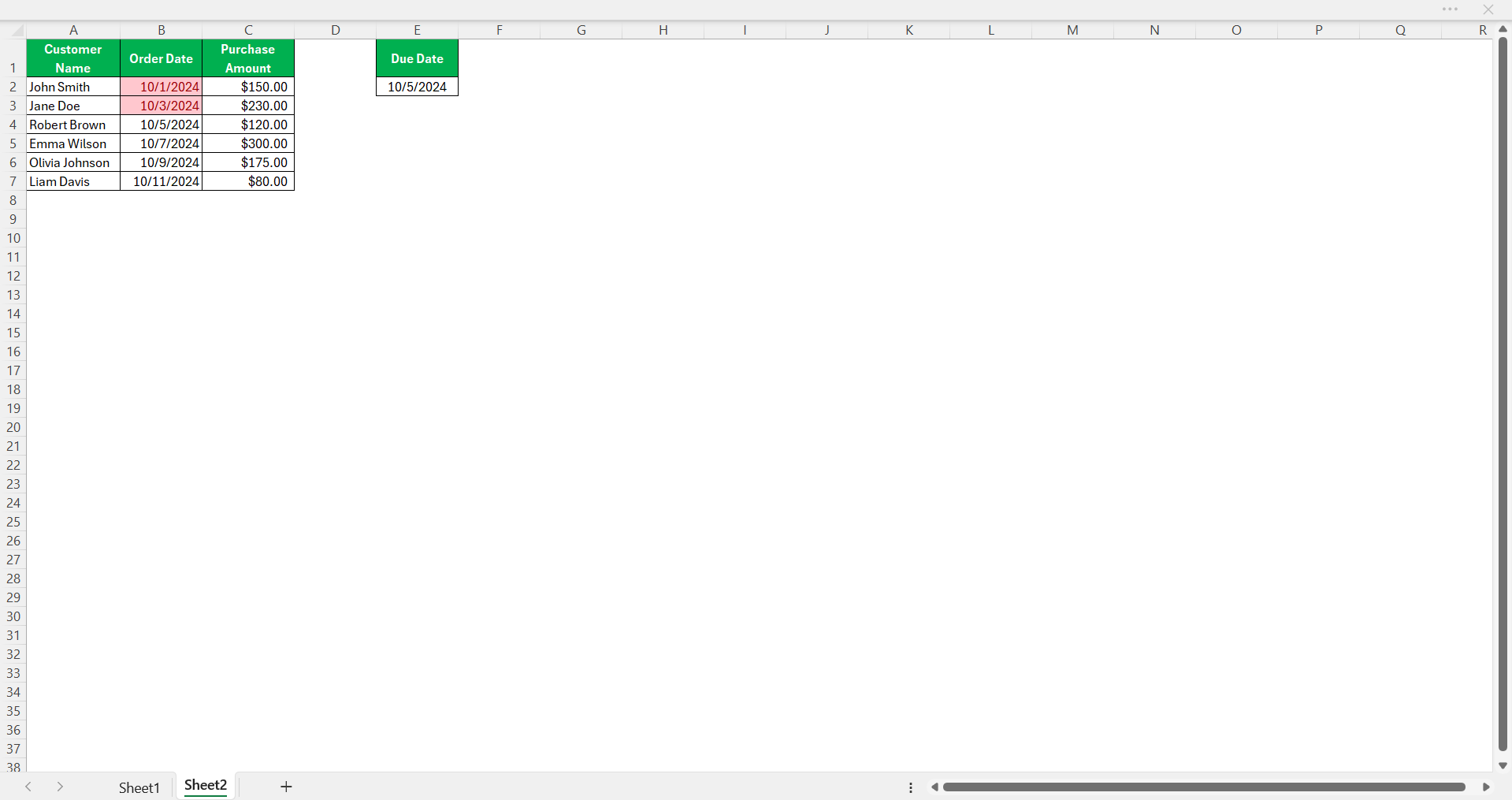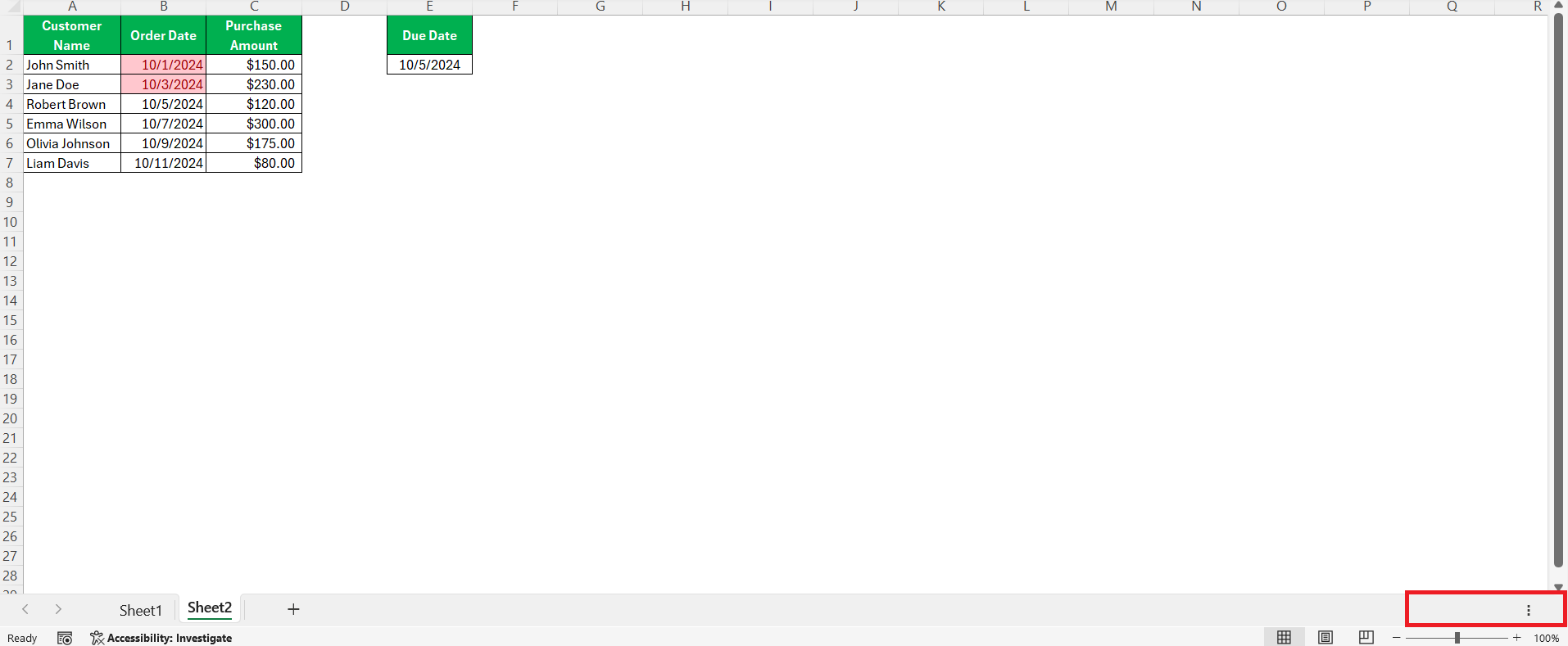When I’m working on complex spreadsheets or diving into data analysis, distractions, and a cramped workspace can really get in the way. That’s why I love the full-screen mode in Excel! By maximizing my view, I can focus on the data, make more informed adjustments, and avoid toggling between different sections or zooming in and out constantly.
Here, I’ll walk through exactly how to use full screen shortcut in Excel, and a few additional tricks to maximize your screen space.
Key Takeaways:
- Entering full-screen mode in Excel clears distractions, helping to focus solely on the data.
- Shortcut keys like Ctrl + Shift + F1 (Windows) or ⌃ + ⌘ + F (Mac) instantly toggle full-screen mode, boosting workspace efficiency.
- Adding the “Auto-hide Ribbon” command to the Quick Access Toolbar (QAT) offers quick access to a cleaner workspace.
- Hiding the formula and status bars, or using Freeze Panes, provides more screen real estate while keeping important data accessible.
- Control readability by zooming in and out or use Freeze Panes to keep headers visible while navigating large datasets.
Table of Contents
Excel Full Screen Essentials
Unlocking More Screen Real Estate
Excel’s versatile workspace is essential for complex data analysis and viewing large spreadsheets. To truly harness the power of this space, we often need more screen real estate. This is where Excel’s full-screen mode comes into play. By decluttering the screen of navigational ribbons and toolbars, we can expand our work area, making it easier to focus on the data.
Why Use Full Screen in Excel?
Going full screen in Excel is a lifesaver, especially when I need to concentrate on my work without distraction. With full screen, all the Excel toolbars and other on-screen elements (like the formula bar and status bar) are hidden, leaving me with a clear view of just my data. It helps me stay focused and improves my productivity, especially when working with large datasets.
Mastering the Full Screen Toggle
Using Ribbon Options
Switching to full screen in Excel is remarkably smooth and efficient. We can find the Full-Screen command by clicking on the Ribbon Display Options dropdown in the Ribbon tab’s right corner.
This instantly hides extraneous interface elements giving us a pristine view of our worksheet.
What I appreciate is how this mode simplifies the visual field, minimizing distractions for more concentrated work sessions.
If we’re making a presentation or showcasing data, the full screen becomes a professional touch that emphasizes the information over the software’s interface.
Shortcut to Full Screen Perfection
The magic combination of Ctrl + Shift + F1 instantly elevates my Excel experience to full screen perfection. For Mac users like me, the ⌃ + ⌘ + F shortcut is just as efficient
I revel in how these shortcuts liberate my workspace from the clutches of a cluttered screen with one swift keystroke. Remember, this doesn’t mean the rest of Excel’s functionality is out of reach; other keyboard shortcuts remain active, and toggling back is as simple as repeating the shortcut or using the mouse.
Adding Full Screen to the Quick Access Toolbar
Excel doesn’t have a direct full-screen toggle button, but we can achieve a similar result by adding the Ribbon Display Options button to the QAT. Here’s how I do it:
STEP 1: Right-click on the Ribbon or anywhere in the QAT area and select Customize Quick Access Toolbar.
STEP 2: In the options window, go to Choose commands from and select All Commands from the dropdown. Scroll down the list and select Auto-hide Ribbon or Full Screen if available (the name can vary depending on Excel versions).
STEP 3: Click Add to place it in the Quick Access Toolbar, and then click OK.
Once added, this button will hide the Ribbon, giving me a cleaner, more full-screen-like workspace.
Beyond Full Screen: Other Viewing Tricks for Efficiency
Zooming In and Out Like a Pro
Zooming in and out is an invaluable tool in Excel that aids in enhancing readability or providing an overview of the data. I’ve mastered the art of using the zoom slider at the right bottom corner of the Excel window.
But often I find myself using the shortcut Ctrl + Mouse Scroll for precision control. When I need to jump to a specific zoom level, the View tab is there with preset percentages and even a custom zoom option for more refined adjustments.
Freezing Panes for Better Navigation
Navigating large spreadsheets without losing sight of headers is a breeze with Excel’s Freeze Panes feature. By selecting a cell and then navigating to View -> Freeze Panes, I effectively lock specific rows or columns in place.
It’s like having an anchor amidst the sea of data; no matter how far I scroll, the essential information stays in view. This trick is especially helpful when dealing with extensive datasets where scrolling would otherwise mean losing the context of the data.
Maximizing Workspace Without Full Screen
Sometimes, full screen is a bit too restrictive for my workflow. In these cases, I make use of Excel’s other features to maximize space while still keeping the essential tools visible.
Minimize the Formula Bar
The formula bar can take up unnecessary space, especially when I don’t need it. To hide it: Go to the View tab and uncheck Formula Bar.
This helps me see more rows in my worksheet.
Collapse the Status Bar
The status bar at the bottom of Excel can also be minimized if I need every inch of screen real estate.
While there isn’t a direct setting to hide it, I simply make sure not to overload it with too many items like “Average” or “Count” that I may not need constantly.
FAQ: Optimizing Your Excel Experience
How do I full screen in Excel?
To enter full screen in Excel, click on the “Ribbon Display Options” icon in the top-right corner near the Minimize button, and select “Full Screen.” Your spreadsheet will then occupy the entire screen, with the Ribbon and Quick Access Toolbar hidden.
What is full screen shortcut in Excel?
The shortcut key for toggling full screen in Excel depends on the platform. On Windows, you can use ‘Ctrl + Shift + F1’. For Mac users, pressing ‘⌃ + ⌘ + F’ toggles full screen mode. Use the same combination to exit full screen.
How Do I Toggle Full Screen in Different Versions of Excel?
Toggling full screen in different versions of Excel can vary. In versions before 2013, use the dedicated ‘Full Screen’ command under the View tab. In newer versions, you need to auto-hide the Ribbon with ‘ALT + W + F’. For a quick toggle, customize the ribbon to add the full screen command or use a macro. Unfortunately, there’s no built-in shortcut for all versions.
How Can I Customize What’s Visible on My Screen?
Customize what’s visible on your screen by right-clicking the Ribbon and choosing ‘Customize the Ribbon’ to tweak displayed tabs. You can also show or hide gridlines and headings via the View tab for cleaner data presentation. Minimizing the Ribbon or using the Full Screen mode provides even more space. Each of these adjustments helps tailor Excel to suit your screen visibility needs.
How do I make Excel F11 full screen?
To make Excel go full screen using the F11 key, install the ASAP Utilities add-on. Once installed, enable the option “Use the F11 key to switch between full screen and normal view” found under: ASAP Utilities Options » Settings, language, and contact information. This allows you to toggle full screen with F11, reminiscent of browser behavior.
John Michaloudis is a former accountant and finance analyst at General Electric, a Microsoft MVP since 2020, an Amazon #1 bestselling author of 4 Microsoft Excel books and teacher of Microsoft Excel & Office over at his flagship MyExcelOnline Academy Online Course.


